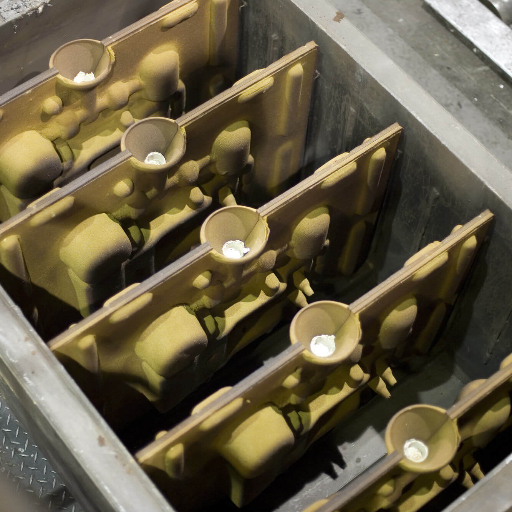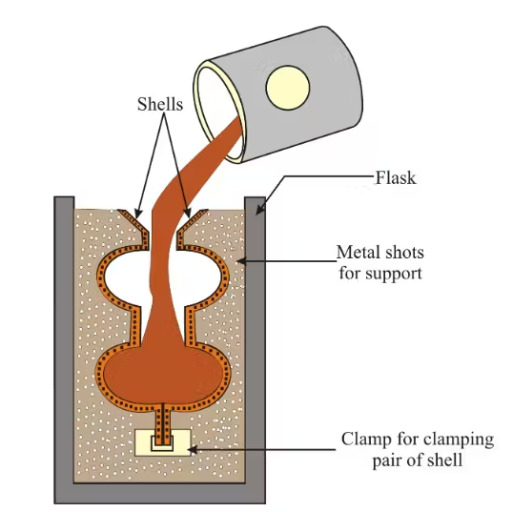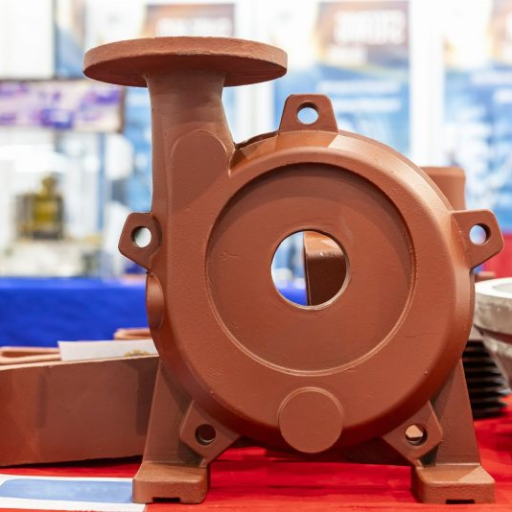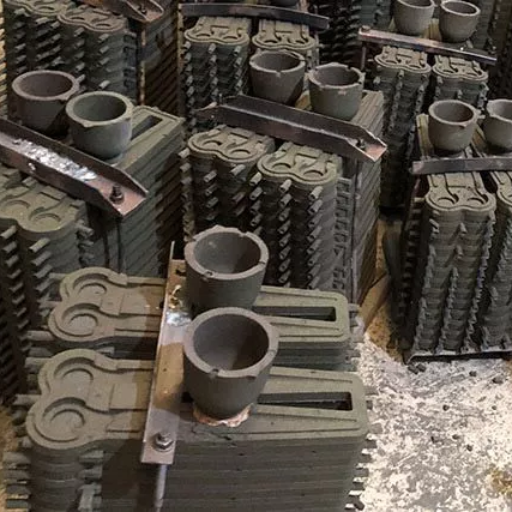Shell molding is a highly flexible and widely employed method of metal casting compared to traditional methods. The process that is accurate and has no wastage involves using sand-resin mixture to form thin but strong shell moulds. This blog post will get into the nitty-gritties surrounding shell mold casting ranging from making the initial molds to producing top quality metal pieces. We will also look at detailed steps, materials used as well as benefits and possible areas of application of this revolutionary means of production. Whether you’re a newbie in metal casting or just want to polish your knowledge, this ultimate reference provides you with in-depth understanding about shell mold casting process.
What is Shell Mold Casting?
How does the Shell Mold Casting process work?
The Shell Mold Casting process is a creative way of making a mold out of materials such as metal. Typically, what is used to make this mold pattern for example metal. The pattern is covered with both sand fine and thermosetting resin that can be rigid if heated. As soon as the shell solidifies, it is detached to allow a precise mold. Molds are then prepared and assembled for casting. Molten metal fills the cast cavity before being solidified in hollow shells form. Finally, the shell breaks open allowing the complete metallic component to become visible after removal of it hence cooling and hardening of molten metal. For its high precision, excellent surface finish, dimensional accuracy as well as producing complex parts it has gained popularity.
What materials are used for Shell Mold Casting?
In shell mould casting, I use a blend of fine sand alongside thermosetting resin to fabricate the moulds that I need for my casting purposes.I usually employ pure silica based fine sand which gives me enough heat resistance and refractoriness that I require at this particular juncture; however some prefer using zircon sand.The binder or rather glue resin utilized in binding those granules resins together has been from phenolic or epoxy origins so far.For instance, components made by this method may be cast from various metals namely steel, ferrous alloys like iron, aluminum or other metallic alloys meant to bring about certain desires properties during their production.Therefore my material choice helps me deliver superior quality products supporting higher precision levels besides attaining an excellent surface finish attained by most SMC processes.
How is Shell Mold Casting different from Sand Casting?
There are several essential differences between these two methods—shell moldcasting and sandcasting.The first difference between shell moldcasting and sandcasting is that instead of loose sand being rammed around a pattern like in standard green-sand molding processes; a thin layer of resin coated sand is used. This thin shell allows for greater accuracy in dimensions and better surface finish compared to the rougher surface which is characteristic of most sand casts. Additionally, these molds are firmer than those in sandcasting; hence, they can create more complex precision shapes. In addition, the process is more efficient as the shells are easily produced and can be re-used several times compared to one-time use of sands. Shell mold casting has a higher cost due to materials and preparation unlike sand casting but it gives superior quality components worth investment.
What are the Advantages of Shell Mold Casting?

Precision in Shell Mold Casting is High.
The accuracy of shell mold casting is widely known, and it can be used to produce components with very tight tolerances and intricate details. This is because the resin coated sand gives the molding a smooth surface, minimizing the amount of finishing required. This high accuracy makes this process suitable for manufacturing parts that require a high dimensional accuracy and an excellent surface finish such as engine components or intricate machinery parts. In addition, the shells are hard enough to maintain complex shapes without distorting during casting. Therefore, shell mold casting stands out in terms of producing quality parts that are consistent and can be repeated well.
Advantages of using Shallow-wall Shells
When I use shallow wall shells for my shell mold castings, there are several advantages that improve productivity and quality. First of all, shallow wall shells heat up very quickly and also cool down rapidly thereby speeding up the entire casting cycle which consequently enhances efficiency in this process. Secondly, thin-walled shells result into savings on material costs through reduced raw materials usage as well as decreased energy consumption. Additionally they remain dimensionally stable enough to capture fine details hence enabling components having outstanding surface finishes as well as precision. Hence by selecting shallow-wall shells one will not only optimize this manufacturing method but also attain better quality.
Metal Patterns Can Be Reused
In my experience re-usability of metal patterns is one big advantage about shell moulding casting process.Metal patterns are ruggedand able to withstand repeated cycles involving heating and cooling.This also reduces cost significantly over time since the same pattern can be employed over numerous molds before it begins wearing out or any signs become visible.Furthermore, these patterns guarantee sameness and consistency in castings hence each part produced meets strict industry standards in areas like aerospace or automobile industry.By adopting reusable metal patterns within our processes not only lessens their expense but also safeguards environment by diminishing waste generation while cutting down on excessive repurchases yearly.
What are the Disadvantages of Shell Mold Casting?

Defective Ferrous and Non-Ferrous Metals
Even though shell mold casting has numerous benefits, it has limitations when it comes to ferrous and non-ferrous metals. The major challenge with ferrous metals like iron or steel is the high melting temperatures involved. The process necessitates specific machinery and methods for containing the heat, which increases production costs and technological complexity. Conversely, non-ferrous metals like aluminum or copper can face problems such as porosity and oxidation during casting. These defects can impact on the final products quality as they may require additional testing or treatments to qualify for use in different manufacturing processes. It is therefore of utmost importance to know about these material-specific limitations so that optimal manufacturing outcomes are achieved using shell mold casting.
Use of Expensive Metal Patterns
The usage of expensive metal patterns in shell mold casting is a significant disadvantage. According to my research on websites such as foundrymag.com, azom.com, thefabricator.com among others; one thing I learnt is that while metal patterns provide long-lastingness and precision their initial cost is quite high. This kind of upfront investment can be prohibitive especially for small companies producing low volume runs. Besides, there are costs associated with maintaining them or replacing them if necessary. Despite these costs however, a good number of industries prefer these metal patterns because they have been proven over time as being cost effective materials with long term economic viability leading to consistent parts.
Potential Issues With Surface Finish
Shell mold casting also suffers from surface finish issues. Sand grain size, type of binder used and pouring temperature are some factors that influence surface quality after castings have been done. For instance large sand grains may lead to rougher finishes compared to fine-grained sand surfaces which will give smooth surfaces upon casting.Therefore when selecting resin binders one must be very careful since wrong choice could result in unfavorable surface texture.
Suggested technical parameters include:
- Grain Size: Usually measured in mesh size; finer grains (100-150 mesh) for smoother finishes and coarser grains (50-70 mesh) for rough surfaces.
- Binder Type: Various types of resin binders such as phenolic, furan or shellac have different effects on surface smoothness and integrity.
- Pouring Temperature: Increased pouring temperatures reduce viscosity for better fluidity that results in a fine finish but if it is heated beyond the required temperature, it may cause defects like scorching or too much roughness.
To avoid such complications, adherence to these parameters is crucial to achieving excellent casting quality.
What are Common Applications of Shell Mold Casting?

Using in Creating Elaborate Metal Casts
One of the most common applications of shell mold casting is its ability to produce complex metal castings with high accuracy and intricate details. For this reason, it is widely used in aerospace, automotive, and military industries where parts must have very tight tolerances and smooth surfaces. Some examples of complex components produced via shell mold casting include turbine blades, engine blocks, and delicate gear housings. Fine features reproduction capability coupled with close tolerance maintenance make it suitable for making parts with complicated shapes and exacting specifications.
Use in Cylinder Heads and Gear Housings
Shell mold casting is particularly advantageous for manufacturing cylinder heads as well as gear housings due to its accuracy and ability to create complex geometries. According to my own judgment, this method provides good material properties as well as dimensions with tight tolerances that are important for functioning of such details. Shell mold casting also provides a smooth surface finish that is highly sought after by cylinder heads hence improving engine performance. Similarly, gear housing requires intricacy in detailness alongside power which is reliably obtained from this type of casting process. Additionally, these essential automotive parts can be manufactured using shell mold casting because it operates at a high production rate which makes it cost effective.
Production of Lever Arms and Aluminum Alloys
In my experience, the employment of the shell mold casting technique has been an efficient way to manufacture lever arms and aluminum alloys. This ensures that they possess required mechanical properties by creating intricate and accurate shapes for lever arms through shell mold casting process. The process is particularly useful when molding aluminum alloys since their cooling rates must be very precisely controlled so that the desired material characteristics may be achieved. These resultant components are light weight yet have excellent strength characteristics while being corrosion resistant therefore fitting into many applications across different industries. Furthermore, the cost-effectiveness along with high production rate makes it popular for such purposes among other types of components made using shell mould casting.
How to Optimize the Shell Mold Casting Process?

Making the Gating System Better
To optimize the shell mold casting process, focus on enhancing the gating system which controls the flow of molten metal into the mold. First, make sure that gate design is such that turbulence and air entrapment are minimized as this may lead to porosity. For uniform flow, simulation software can be used to model gating channels and change their geometry. It will also be helpful to include filters in the gating system for removing impurities from molten metal thus leading to better castings. Lastly, monitor and maintain gating system components regularly so as to avoid wear and tear that could affect its performance.
Best Practices in Pouring Molten Metal
I have collated a few best practices for pouring molten metals based on some of the top online resources available. First of all, molds should always be preheated to recommended temperatures in order not to cause thermal shock or uneven cooling that may lead to various defects. Secondly, while pouring molten metal it is important for me do it slowly so that there’s no turbulence which will introduce air bubbles among other impurities into it. To achieve fluidity and filling of a mould properly it is equally important that pouring temperature used should be correct according with particular type of a metal. Last but not least, ceramic ladles and crucibles are more resistant against thermal cycling therefore they minimize chances of cross-contamination. In this way you can greatly improve quality of your shell mold castings.
Increasing Surface Finish of Castings
To enhance surface finish of castings I focus on several key areas by using some top online resources available today. The first thing I check is whether sand used in making molds is fine graded and conditioned appropriately since finer sand grains produce smooth surfaces after casting has been done. The second area that I am keen about during molding process is mold coating whereby special coatings are normally applied so as to form smooth interface between molding materials and molten metals. It is important to control the rate of cooling this can be achieved by using slow cooling methods which reduces the number of surface defects. I also maintain and clean my equipments often thus preventing contaminants that may spoil the casting surfaces. By diligently following these guidelines, I achieve good surface quality of my castings.
Reference sources
1. Online Article: “Shell Mold Casting: Process, Advantages, and Applications” – The Eagle Group
- Source: The Eagle Group
- Summary/Annotation: This article from The Eagle Group offers an in-depth overview of the shell mold casting process. It covers the steps involved, including creating the mold, pouring the metal, and finishing the casting. The article also highlights the advantages of shell mold casting, such as improved dimensional accuracy and surface finish, as well as its applications in various industries. The Eagle Group is a reputable manufacturer of castings, providing accurate and practical insights, making this source highly valuable for readers seeking to understand the shell mold casting process.
2. Academic Journal: “Advances in Shell Mold Casting Technology” – International Journal of Advanced Manufacturing Technology
- Source: International Journal of Advanced Manufacturing Technology
- Summary/Annotation: This peer-reviewed paper published in the International Journal of Advanced Manufacturing Technology explores recent advancements in shell mold casting technology. It discusses innovations in materials, process optimization, and quality control techniques. The study provides experimental data and analyses to demonstrate improvements in efficiency and casting quality. As an academic journal, this source offers high credibility and depth, making it essential for readers seeking rigorous, technical insights into the latest developments in shell mold casting.
3. Manufacturer Website: “Shell Mold Casting Services and Techniques” – MetalTek
- Source: MetalTek
- Summary/Annotation: MetalTek’s website provides extensive information on their shell mold casting services and techniques. It includes detailed descriptions of the shell mold casting process, the types of materials used, and the advantages of choosing this method over others. The site also features case studies and customer testimonials that showcase successful applications of shell mold casting in various industries. MetalTek, known for its expertise in advanced casting solutions, provides accurate and authoritative information relevant to both beginners and experienced professionals.
Frequently Asked Questions (FAQs)
Q: What is shell molding?
A: Shell casting is a special process of metal casting using resin coated sand to build a mold. This hard shellcast results in exact and efficient casting suitable for metals such as iron or steel.
Q: How does the process happen, shell-casting wise?
A: For every shell-casting procedure, there exists a pattern that has been coated with resin and sand which is heated to form a hardened shell. Thereafter, the molten metal is poured into an expendable mold that consists of the assembled shells. As soon as these metals solidify, this case is destroyed in order to allow out the final castings.
Q: Can you give some examples of applications where shell casting can be used?
A: Automotive parts manufacturing, mechanical engineering production line and aerospace and defense firms are just but some of the areas where it has been employed. Examples include cast iron engine blocks as well as carbon steel gears.
Q: What are the benefits of deploying shell casting?
A: Key advantages offered by shell castings are high accuracy levels; fine finishes; reuse of mould patterns for increased output per hour while volume production becomes difficult due to complex designs.
Q: What’s the difference between sand casting and shell casting technique?
A: Shell molding is similar to conventional sand molding except that stronger shells are created using resin-coated sands instead. Traditional methods use this approach because it has much better dimensional accuracy and smooth surfaces than sand castings do.
Q: What kinds of metals can be used in shell casting?
A: The shell casting process is versatile and can be done using iron or steel, copper alloys and aluminum castings. Each metal has an impact on the shell molding process and the ultimate product.
Q: Can the shell mold be reused in shell casting?
A: In the shell casting process, multiple halves of shells are made from a single mold. Nevertheless, this type of a shell is normally for single use only hence it will be scrapped after making a metal part shaped like anything one could imagine.
Q: What’s the difference between shell casting and investment casting?
A: Shellcasting consists of producing a hard shelled mould around a pattern while investmentcasting contains ceramic material poured over wax patterns. Both are accurate methods; nevertheless, investmentcasting is often utilized for more intricate designs and finer details.
Q: What are the principal stages involving closing up of the mould in shell casting?
A: They include joining together two shell halves, closing the mould then pouring molten metal into it. When all liquid has filled in the mould to cool down to room temperature, it can then be broken to show as complete metallic piece at last.





